8 Types of Websites and Cost to Develop Them
Table of Contents
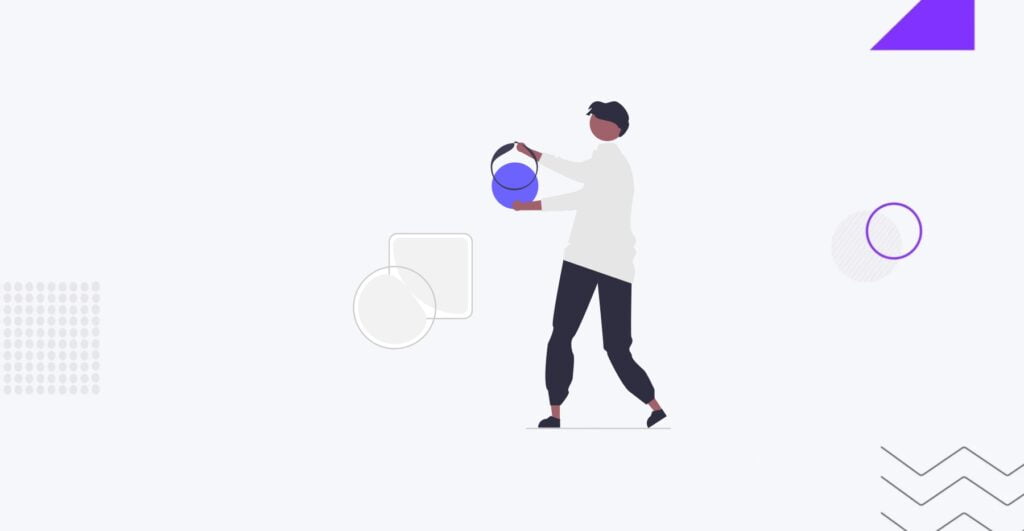
Understanding the specific type of website that suits your needs is the cornerstone of effective planning and budgeting for its development. With many website types catering to diverse purposes, navigating through the options can be overwhelming. In this comprehensive guide, we will explore eight fundamental and popular types of websites, shedding light on their unique characteristics, and functionalities, and providing insights into the average website design cost and timeframes associated with their development.
Informational Websites
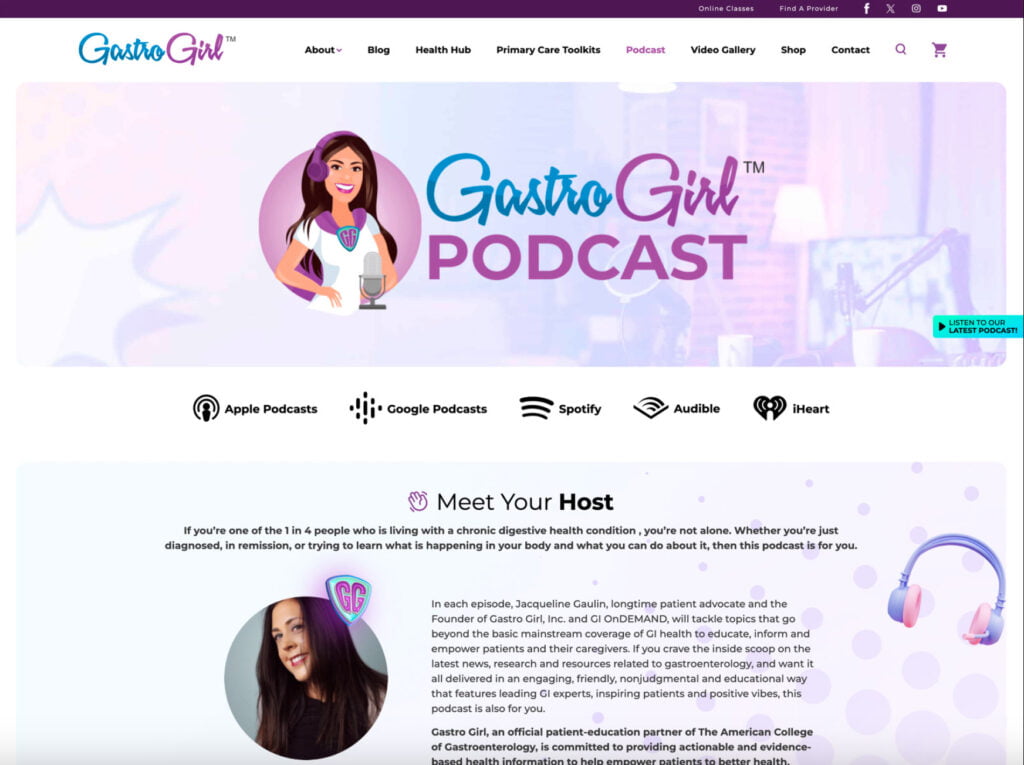
An informational website is designed primarily to provide information rather than facilitate transactions. It offers content and details about a particular topic, product, service, or industry. Informational websites can cover various subjects, including educational resources, news articles, company profiles, product information, etc. The primary goal of such websites is to convey information to visitors clearly and in an organized manner.
Key characteristics and tasks of an informational website:
- Disseminate relevant and valuable information to the target audience.
- Provide educational resources, articles, guides, and tutorials.
- Showcase and represent the brand, company, or organization.
- Establish credibility and trust with the audience through accurate and reliable information.
- Encourage user engagement through features such as comments, forums, or social media integration.
- Ensure easy navigation and organized content structure for a user-friendly experience.
How Much Does Website Development of an Informational Website Cost?
The cost to create a website for an informational project can vary greatly depending on several factors, such as the website’s complexity, the development team’s location, and the type of team (in-house, local agency, outsource agency, freelancers) involved.
Here’s a general breakdown of the costs:
- Template-based sites: Up to $1,000
- Basic sites with minimal features: $3,000
- Average sites with more advanced capabilities: $5,000
- Complex, high-end sites with custom designs and features: Over $5,000
For an informational or small business website (8-16 pages), the cost averages $3,000. However, these are just estimates, and the actual cost can vary. Getting a quote from a few different sources is always best to ensure you get the best price for your specific needs.
How Long Does Website Development Take for an Informational Website?
The time it takes to develop an informational website can vary greatly depending on several factors, such as the website’s complexity, the development team’s experience, and the project’s specific requirements.
As a general guideline, you can expect the following timelines:
- Once you install WordPress and prepare the content, a single-page site can be built within two to three weeks.
- However, these are just estimates, and the actual time can vary. It is always best to discuss your specific needs with your development team to get a more accurate timeline.
Such types of websites are suitable for businesses, organizations, or individuals looking to share information, establish an online presence, or showcase their expertise in a particular field without the need for complex e-commerce or transactional functionalities.
E-commerce Websites
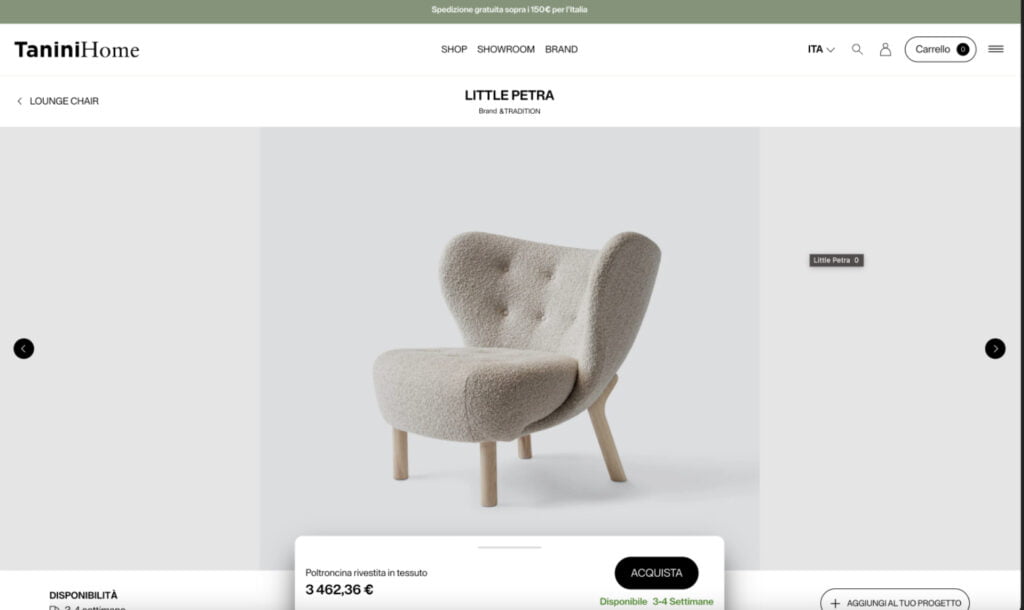
An e-commerce website is a digital platform that facilitates online transactions of goods and services. These websites enable businesses to sell products or services directly to consumers over the Internet. E-commerce websites play a crucial role in modern retail, allowing businesses to reach a global audience and provide customers with a convenient way to browse, select, and purchase products.
Key characteristics and tasks of such types of websites:
- Facilitate secure online transactions to purchase goods and services.
- Display a comprehensive catalog of products with detailed information and images.
- Provide a virtual shopping cart for users to add and manage selected items.
- Integrate secure payment gateways for processing online payments.
- Users can create accounts, track orders, and manage personal information.
- Ensure compatibility and a seamless experience across various devices, especially on mobile platforms.
How Much Does Website Development for E-commerce Websites Cost?
E-commerce website design cost can vary greatly depending on several factors, such as the website’s complexity, the development team’s location, and the type of team (in-house, local agency, outsource agency, freelancers) involved.
Here’s a general breakdown of e-commerce website design costs:
- E-commerce website builders: Can range from $39 to $399 monthly. However, an e-commerce website for new stores will cost about $39 per month.
- Domain registration: $10–$30 annually.
- Web hosting: $5–$250 monthly (depending on the hosting plan and provider).
- SSL certificate: $0 (complimentary with some hosting providers) to $200 yearly.
- E-commerce platform: Open-source (WooCommerce, Magento, or PrestaShop): No cost to download, but there may be charges for extensions, plugins, and themes. Hosted solutions (Shopify, BigCommerce, or Wix): $20 to $300 monthly, based on the plan and features.
- Website design and development: Prebuilt themes: $0–$200. Custom design and development: $5,000+, depending on the complexity, features, and functionality needed.
- Additional costs: Payment gateway fees vary depending on the provider (PayPal, Stripe, Shop Pay) and transaction volume.
How Long Does Website Development of E-commerce Websites Take?
The time it takes to develop various websites for e-commerce projects can vary greatly depending on several factors, such as the complexity of the website, the experience of the development team, and the specific requirements of the project.
As a general guideline, you can expect the following timelines:
- For a simple e-commerce site, it can take anywhere from 50 to 200 hours.
- For a medium-complexity e-commerce site can take between 200 to 600 hours.
Corporate Websites
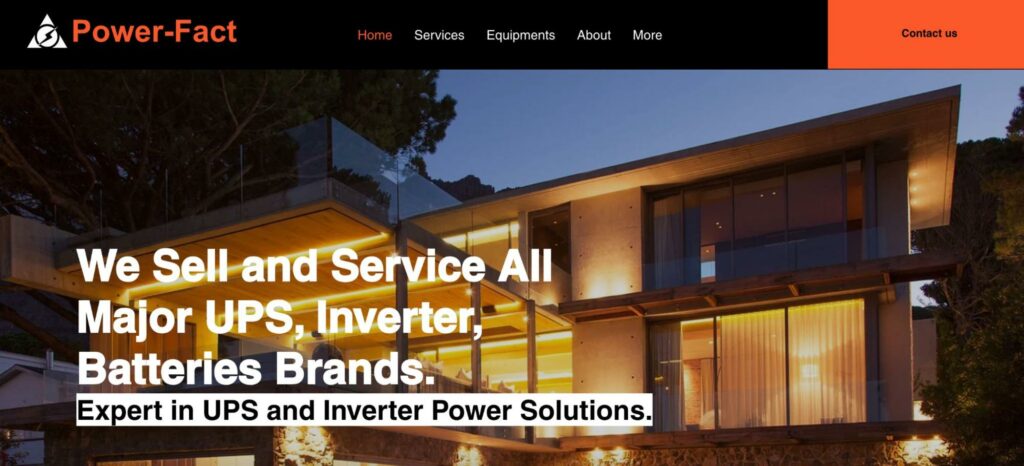
A corporate website is a digital platform created by businesses or organizations to establish their online presence and convey information about their products, services, values, and activities. It serves as a central hub for stakeholders, including customers, investors, partners, and employees, to learn more about the company and its offerings. Corporate websites are crucial in building brand identity, enhancing credibility, and facilitating communication with a global audience.
Key characteristics and tasks of different types of websites for corporate needs:
- Provide detailed information about the company, its history, mission, and values.
- Display a portfolio of products or services offered by the company.
- Offer clear contact details for customers, investors, and partners to get in touch.
- Share company news, press releases, and other relevant updates.
- Provide information for potential investors, including financial reports and corporate governance details.
- Advertise job openings and provide information about the company culture for potential employees.
- Ensure the website is accessible and functional across various devices.
How Much Does Website Development of a Corporate Website Cost?
The cost of developing a corporate website can vary greatly depending on factors such as the complexity, size, design, and the team involved in the development. Here’s a general breakdown:
- Domain Name: The cost of a domain name can range from $0 to $20 per year. Some premium domains may cost more depending on how popular the keywords in the domain are.
- Web Hosting: Web hosting costs range from $30 to $500 annually.
- Theme or Template: The cost for a theme or template can range from $0 to $100 as a one-time fee.
- Professional Web Design: Professional web design costs range from $100 to over $5,000.
- DIY Website Builder: The cost of a DIY website builder can range from $100 to $400 per year.
- SSL Certificate: The cost for an SSL certificate can range from $0 to $249 per year.
- For a corporate website, the cost can start at $20,000. However, complex, high-end sites with custom designs and features can cost over $150,000.
How Long Does Website Development of a Corporate Website Take?
The time it takes to develop different websites for corporate projects can vary greatly depending on several factors, such as the complexity of the site, the team involved in the development, and the project’s specific requirements. Here’s a general breakdown:
- Planning: This initial phase lays the groundwork for your website. The length of time spent in this window of development depends on a few factors, such as the website’s complexity, the website’s creator, and the website’s purpose. This phase typically takes two to three weeks.
- Content Creation: This phase involves creating all the text, images, videos, and other content for your website. This can take anywhere from four to six weeks.
- Website Design: This phase involves creating your website’s visual layout and appearance. This typically takes two to three weeks.
- Testing and Review: This phase involves testing your website on different devices and browsers, fixing any issues, and making final adjustments. This typically takes one to two weeks.
You’re looking at 10-14 weeks from ideation to completion. These time frames are estimations, and your process may take more or less time, depending on your site’s complexity.
Another source suggests that a good rule of thumb is to plan on spending one month for every five web pages. That means a simple 5-page website takes a month, a 10-page website takes two months, and a 20-page website takes roughly 3-4 months.
Government Websites
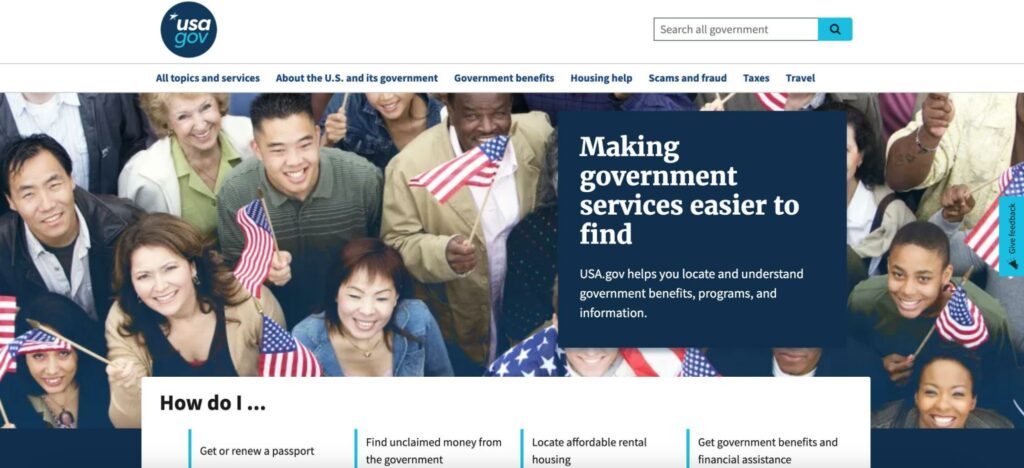
A government website is an online platform created and maintained by a government agency or entity. Such types of websites serve as official channels for delivering information and services to the public. Government websites are vital in enhancing transparency, providing access to government resources, and facilitating communication between citizens and the government. They typically cover many topics, including public services, regulations, news, and official announcements.
Key characteristics and tasks of a government types of websites:
- Provide information about government services, regulations, and policies.
- Enable online access to various government services and forms.
- Share official government announcements, news, and updates.
- Promote transparency by publishing information on government activities, budgets, and decisions.
- Facilitate public engagement through features like feedback forms and community forums.
- Ensure the website is accessible to individuals with disabilities and in multiple languages.
- Implement robust security measures to protect sensitive government information.
How Much Does Website Development of Government Websites Cost?
The cost of developing a government website can vary greatly depending on the scope and complexity of the project. Here are some general cost ranges:
- For smaller contractors, the cost often falls from $25,000 to $50,000.
- Medium-sized contractors can expect their site to cost between $50,000 to $150,000.
- For larger, more complex contractors, the cost may be $250,000 or more.
How Long Does Website Development of Government Websites Gonna Be?
The time it takes to develop a website, including government websites, can vary greatly depending on the complexity of the site, the specific requirements, and the resources available. Here are some general estimates:
- The process of building a website with a development firm typically encompasses six steps: Research and selection, initial communication and goal setting, creating an action plan, design mockups and feedback, in-depth development, and review and revision.
- On an overall basis, a website will take a minimum of 4-6 weeks to build. If the specifications for the site are more complex, it may even take more time.
- The web design time estimate ranges within 15-80 hours.
Building a website can take around one to six months, depending on your goals and resources.
Personal Websites
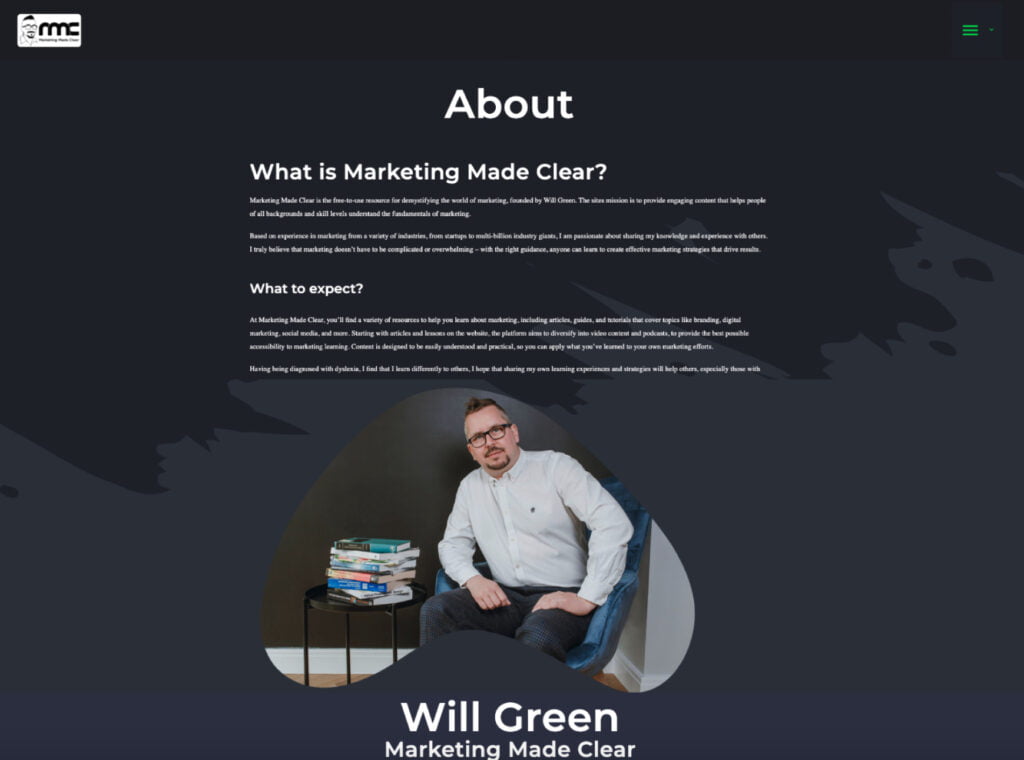
These are different types of websites that help individuals to showcase their brand, skills, and portfolio. It serves as a digital resume or portfolio, allowing individuals to present information about themselves, their achievements, and their work. Personal websites are commonly used by professionals, freelancers, creatives, or anyone looking to establish an online presence and share their expertise or personal projects.
Key characteristics and tasks of these types of websites:
- Display a portfolio of work, projects, or achievements.
- Share personal background, skills, and expertise.
- Provide a means for visitors to get in touch.
- Share personal thoughts, insights, or updates on ongoing projects.
- Function as a digital resume detailing education, work experience, and skills.
- Connect and share content through various social media platforms.
- Allow for personalization and customization to reflect the individual’s unique style.
How Much Does Website Development of Personal Websites Cost?
A personal website web design pricing can vary greatly depending on the complexity of the site, the specific requirements, and the resources available. Here are some general estimates:
- The average cost to build a website with an agency or freelancer is $12,000 to $150,000.
- With a website builder, the cost is $0 to $500 per month.
- Routine site maintenance costs $400 to $60,000 per year or $0 to $5,400 per year with a website builder.
- The average cost of a basic website created by a freelance website designer is $6,760.
- If you’re considering hiring a professional, building a site can cost anywhere from $3,000 to $10,000, with site maintenance incurring regular costs on top.
How Long Does Website Development of Personal Websites Gonna Be?
The time it takes to develop a personal website can vary greatly depending on the complexity of the site, the specific requirements, and the resources available. Here are some general estimates:
- Many freelance developers offer to complete a WordPress website in 2-3 days. However, a functional custom-designed website indeed takes more time to build.
- The average time to build a website using WordPress is around 5 weeks or 200 hours, while creating a custom website takes 240 hours at least.
- A typical website will take 14 weeks at a minimum from start to launch. This includes 3 weeks discovery, 6 weeks design, 3 weeks initial development, and 2 weeks of modifications.
Landing Pages

A landing page is a type of website designed with a specific purpose in mind – to convert visitors into leads or customers. Unlike traditional websites, landing pages are typically created for targeted marketing campaigns focused on a single goal, such as capturing contact information, promoting a product, or encouraging a specific action. They often serve as the entry point for visitors who have clicked on an online advertisement or a link shared through various channels.
Key Tasks of Landing Pages:
- Capture user information for future marketing efforts.
- Showcase a particular product or service and encourage conversions.
- Gather registrations for webinars, events, or promotions.
- Serve as a destination for email campaign click-throughs.
- Conduct experiments to optimize conversion rates.
How Much Does Landing Page Development Cost?
The average range is between $3,000 to $5,000. The cost depends on complexity, design requirements, and integration with other systems. Custom features or advanced functionalities may increase the overall cost. Here’s a general breakdown:
- Landing Page Builder: These tools usually offer a simple drag-and-drop interface, allowing you to choose from several pre-designed templates. They are quite affordable and usually range from $25 to $100 per month.
- CMS (WordPress): This is ideal for intermediate users with some technical knowledge. Initial setup costs can range from $50 to $500, depending on whether you opt for free or premium themes and plugins. Then you have to add the cost of web hosting and domain, which usually ranges from $5 to $50 per month.
- Freelancer or Agency: If you are looking for a solution tailored to your brand, hiring a freelancer or agency is ideal. While this is the most expensive option, ranging from $3,000 to over $10,000, it offers the highest customization.
How Long Does Landing Page Development Take?
The time it takes to develop a landing page can vary greatly depending on several factors, such as the complexity of the site, the team involved in the development, and the project’s specific requirements. Here’s a general breakdown:
- Discovery and Planning: This initial stage lays the groundwork for your website. The length of time spent in this window of development depends on a few factors, such as the website’s complexity, the website’s creator, and the website’s purpose. This phase typically takes 80+ hours.
- Design: This phase involves creating your landing page’s visual layout and appearance. This typically takes 2 to 3 weeks.
- Content Creation: This phase involves creating all the text, images, videos and other content for your website. This can take anywhere from 4 to 6 weeks.
- Testing and Review: This phase involves testing your landing page on different devices and browsers, fixing any issues, and making final adjustments. This typically takes 1 to 2 weeks.
In total, you’re looking at 10-14 weeks from ideation to completion. These time frames are estimations, and your process may take more or less time, depending on your site’s complexity.
Marketplace
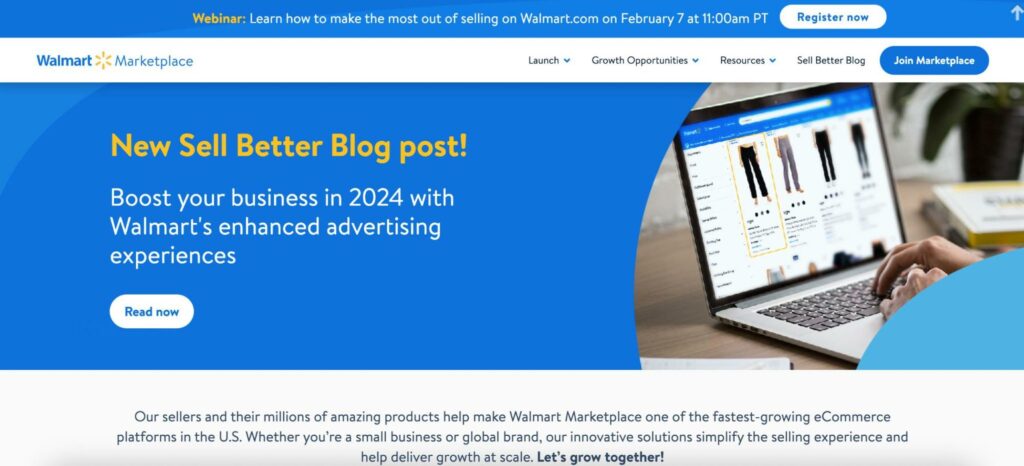
A marketplace website is a platform that connects buyers and sellers, facilitating the exchange of goods, services, or information. These types of websites play a crucial role in e-commerce, enabling multiple vendors to showcase and sell their products or services in one centralized location. Marketplaces often offer features such as user profiles, product listings, reviews, and secure payment gateways to enhance the buying and selling experience.
Key Tasks of Marketplaces:
- Enable secure transactions between buyers and sellers.
- Allow vendors to showcase their offerings.
- Build trust by showcasing feedback from previous buyers.
- Provide secure payment options for seamless transactions.
- Facilitate easy navigation through various products or services.
How Much Does Marketplace Development Cost?
The cost of developing a marketplace website can vary greatly depending on several factors, such as the project’s complexity, the features you want to include, the technology stack used, and the type of marketplace you’re building. Here are some rough estimates:
- A small marketplace project (a basic online platform for buying and selling a single product or service) could cost between $3,000–10,000.
- A medium-complexity project (a platform for buying and selling various products from different sellers) could cost between $5,000–20,000.
- A complex marketplace (having advanced features and potentially cutting-edge technologies) could start at $25,000.
If we take an average rate of $50 per hour, building a marketplace website could start from $25,000. However, these are just estimates, and the actual cost can vary depending on each project’s unique requirements.
How Long Does Marketplace Development Take?
The time it takes to develop a marketplace can vary greatly depending on several factors, such as the project’s complexity, the features you want to include, and the technology stack used. Here are some rough estimates:
- The design and development phase usually begins after defining the scope and project roadmap. The development timeline varies based on the complexity and uniqueness of your marketplace. However, development phases usually run anywhere from 6 to 12 weeks.
- In the discovery phase, you start with your marketplace app idea and validate it. This phase also includes conducting UX research and paying attention to metrics.
- After the discovery phase, the project’s requirements are collected, and a feature set is drawn up.
- Then, a minimum viable product (MVP) is built to engage initial feedback.
- The product is then tested and launched to the first consumers.
- Finally, key metrics are monitored, and the marketplace platform is promoted to acquire more users.
CRMs, LMS, and other web applications
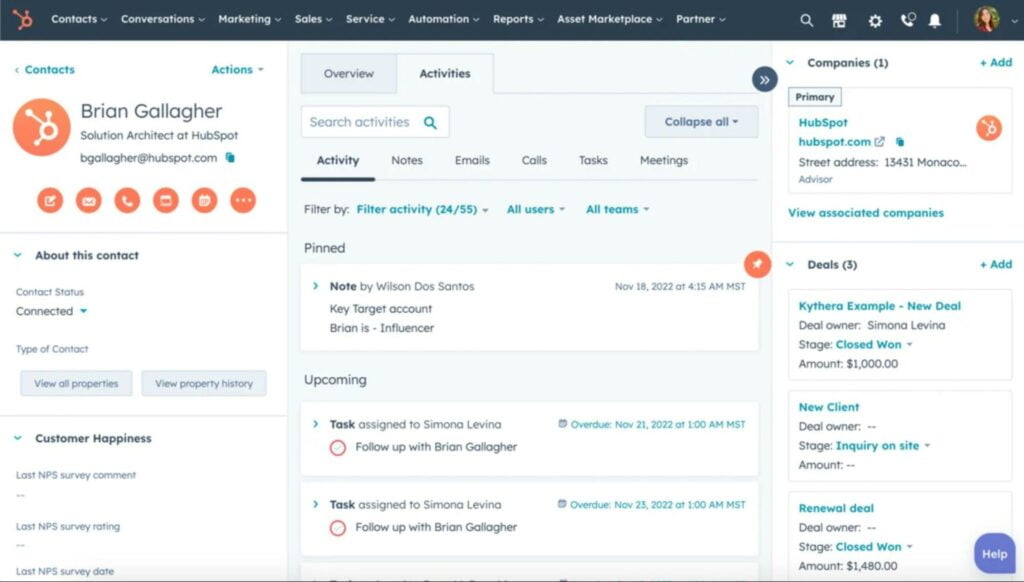
CRMs (Customer Relationship Management systems), LMS (Learning Management Systems), and other web applications are specialized platforms designed to cater to specific business needs. These applications are not typical websites but rather dynamic, interactive systems that facilitate various functions tailored to organizational requirements.
How Much Does Development of CRMs, LMS, and Other Web Applications Cost?
The average cost starts at $10,000. The cost of developing CRMs, LMS, and other web applications can vary greatly depending on factors such as the project’s complexity, the features you want to include, and the technology stack used. Here are some rough estimates:
How Long Does Development of CRMs, LMS, and Other Web Applications Take?
The development time for CRMs, LMS, and other web applications can vary greatly depending on factors such as the project’s complexity, the features you want to include, and the technology stack used. Here are some rough estimates:
- CRM Development: The setup of a CRM can take anywhere from one week to one month. This time depends on how much data you need to migrate from your existing CRM, how big your team is, who needs access to your CRM, and how complicated you want your CRM automation to be.
- LMS Development: Developing a Learning Management System (LMS) can take three months. This timeline depends on the deployment type, the number of features, and the budget.
- Web Application Development: The average time to develop a web application is around 6 months. This includes the time it takes to build, test, and launch the app. However, this is just an average. Some apps can be built in weeks, while others can take months or even years to develop.
How to Choose Your Type of Websites?
Choosing the right type of website involves considering various factors aligned with your goals and needs. Here are some tips to guide your decision:
1. Define Your Purpose
Informational Website:
- Suitable for: Providing information, resources, or content to educate your audience.
- Consider if: Your primary goal is to share knowledge, insights, or news.
e-Commerce Website:
- Suitable for: Selling products or services online.
- Consider if: Your main objective is facilitating online transactions and generating revenue.
Corporate Website:
- Suitable for: Establishing a professional online presence, showcasing products or services, and building brand credibility.
- Consider if: You represent a business seeking to convey a corporate image and provide comprehensive information.
Government Website:
- Suitable for: Government agencies or organizations looking to provide public information, services, and resources.
- Consider if: You are a government entity aiming to enhance public access to information and services.
2. Audience Focus
Personal Website:
- Suitable for: Self-expression, personal branding, or sharing personal experiences.
- Consider if: You want a platform to showcase your portfolio, blog, or achievements.
Landing Page:
- Suitable for: Promoting a specific product, service, or event.
- Consider if: You are running a targeted marketing campaign and need a focused page to drive conversions.
Marketplace:
- Suitable for: Facilitating transactions between multiple buyers and sellers.
- Consider if: You want to create a platform for various vendors to showcase and sell their products or services.
CRM (Customer Relationship Management):
- Suitable for: Streamlining customer interactions, sales, and marketing processes.
- Consider if: Your focus is on managing and improving customer relationships, lead generation, and sales efficiency.
3. Functionality and Features
- Consider each type of website’s specific features and match them with your requirements.
- Evaluate the technical requirements and choose a platform that aligns with your team’s capabilities or budget for hiring professionals.
4. Budget and Resources
- Assess your budget for initial development, maintenance, and potential future upgrades.
- Consider ongoing costs such as hosting, security, and updates.
5. Scalability
Determine your project’s scalability needs. Some websites may need to accommodate growth and increased functionality in the future.
6. Consult Professionals
Seek advice from web developers or consultants to ensure your choice aligns with your long-term goals and technical requirements.
Conclusion
Selecting the right website type involves a meticulous assessment of key factors. This guide delves into eight fundamental website categories, highlighting their unique features, functionalities, average costs, and development timelines. Informational websites prioritize content dissemination, with costs ranging from template-based to high-end custom designs.
E-commerce websites facilitate online transactions, and costs vary based on complexity. Corporate websites, essential for brand identity, start at $20,000. Government websites emphasize transparency, with costs starting at $25,000. Personal websites offer self-expression, with costs varying widely. Landing pages, vital for targeted marketing, cost between $3,000 to $5,000. Marketplace development connects buyers and sellers, costing $25,000 or higher. CRMs, LMS, and web applications, catering to specific needs, start at $25,000.
An informed choice involves considering purpose, audience, functionality, budget, and scalability, while professional consultation ensures alignment with long-term goals and technical requirements.
At IT Monks, we specialize in launching a wide range of websites. If you require professional assistance with launching, maintaining, optimizing, or hosting your website, don’t hesitate to reach out to us!
FAQ
- What are the different types of websites?
The different types of websites include Informational, E-commerce, Corporate, Government, Personal, Landing Pages, Marketplace, and CRMs, LMS, and other web applications.
- What is the most common type of website?
The most common type of website is Informational, designed to provide content and details about a particular topic, product, service, or industry.
- Which type of website is easy to create?
Landing Pages are relatively easy to create, especially with the availability of tools like landing page builders, WordPress, and DIY website builders.
Contact
Don't like forms?
Shoot us an email at [email protected]




